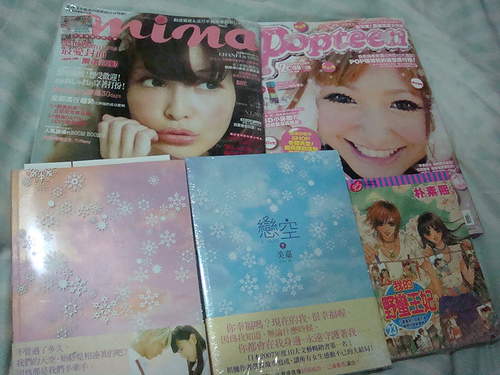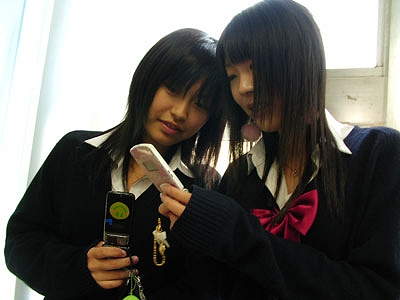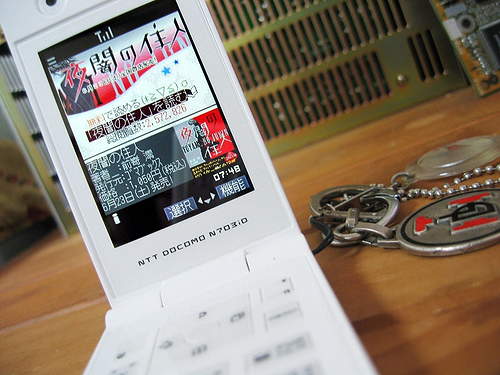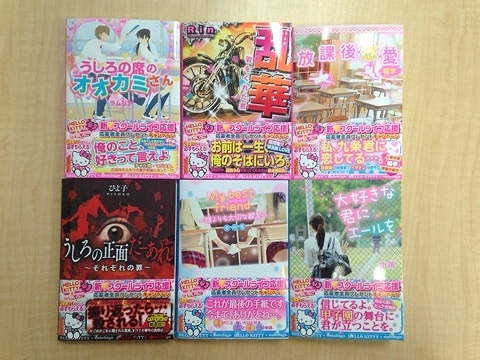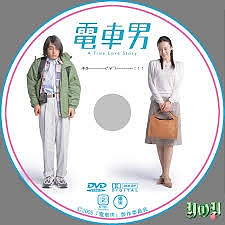Japanese Heels – Words among the waves
- Details
- Written by M.me Red
“Wherever we go, we are all connected” (serial experiment lain, 1998)
Thoughts, words, visions, as frailas the thinnest of heels. A column edited by M.me Red.
The growing diffusion of cell phones with an Internet connection is the catalyst for what's truly a revolution in the publishing world, the keitai shōsetsu or 'cell phone novels, written and read as one would do with a last gen chatting app. On one side there is a growing market for this kind of communication among young people, on the other a platform in the form of a software launched in the Nineties by portal Maho no iRando.
What distinguished this from other social networks was the ability for users to build their own home page, where they could publish their stories. Given the platforms' success, it was further developed for upload and download of texts through one's cell phone (keitai), making fo quicker feedback.
Mass media got interested in this new type of narrative in 2007, when cell phone novels began to breka into the year's top 10, though the first novel is from 2000. To put it into perspective: in November 2006, Maho no iRando counted 5 million accounts and 1 billion 450 million accesses per month; in June 2008 accounts were up to 6 million for 3 billion 500 million accesses. Authors and readers of keitai shōsetsu are mostly young adults, women ebetween 15 and 30, homewives with no children, singles, students. Mone, author of bestseller Eternal Dream (2007) was 21 and had just left university to marry when she began writing her first cell phone love story, in the form of a diary. Other best selling works were born from the fingertips of high school students, stories of love and death, passion and tragedy. Mika, author of Koizora (2005), says she wrote the novel just after graduation: the protagonist has her name, and the story seems to be a fictional autobiography.
Actually, almost all keitai shōsetsu present themselves as autobigraphies, although their complex plots often border on fiction. Furthermore, for many this kind of writing becomes an escape from the boredom and oppression of daily life, as well as a way to socialize with other writers and readers through feedback. Authors often use a pen name (Mone, Mei, Mika) and often remain anonymous, further feeding the realistic allure of stories that deal with taboo topics – difficult love, violence, rapes, accidental pregnancies, abortions, suicides – in the often dramatic lives of teenagers. These works could be seen as formative novels of sorts, in which the female protagonists conquer heir maturity by surviving the difficulties of life.
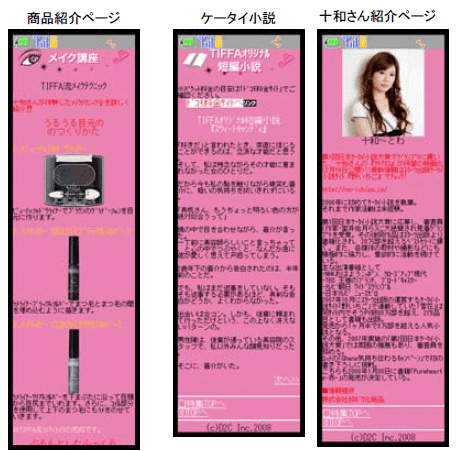
The big novelty, however, is the writing style: typed on a cell phone's keypad, these novels proceed by dialogue, fragments, informal language and youth slang; simple phrases with little description, fragments that invite the reader to fill the blanks. Gaps in time, suspended thoughts are suggested by suspension marks and sudden a capo, in a style that closely mirrors its succinct medium and makes copious use of emoticons, until now excluded from the written page.
This new kind of novel also had an impact on the publishing world: now readers have access to the work in real time, while it still is a work in progress, but also can comment it with criticism, appreciation and personal anecdotes. Paper publication trails on the success of the online version, and is seen as a sort of collector's item, a memento of the shared experience that took place during production. One example is a recent literary phenomenon, Densha Otoko (Train Man, 2004). The novel, published in a volume by Shinchōsha and authored by pseudonym Nakano Hitori (One of us), is based on a lengthy Futaba Channel thread: on March 14 2004, at 12:55, a man posts a messagge telling of beautiful Hermés, a woman randomly met in a metro, who stole his heart. An awkward loner, he seeks help to find the girl again. About a million people followed the saga of Train Man (the boy's nickname), giving him all manner of suggestions and advice.
The protagonist is an otaku, one of many assiduous denizens of Akihabara – fans of Internet, manga, videogames and anime. What's really new, however, is the style of the story, entirely told through messages formatted as they were on the online forum. The book was an astounding success – 450.000 copies sold in barely a month – and was also inspiration for a film in 2005, a drama in 2006 and five manga series. A perfect example of the cross-media tendency in contemporary culture: from novel, to film, to drama, to manga, to anime and videogames. And the other way round, because the game can start from anywhere.
(from Roberta Novielli- Paola Scrolavezza, Lo schermo scritto. Letteratura e cinema in Giappone, Libreria Editrice Cafoscarina, Venezia 2012).



